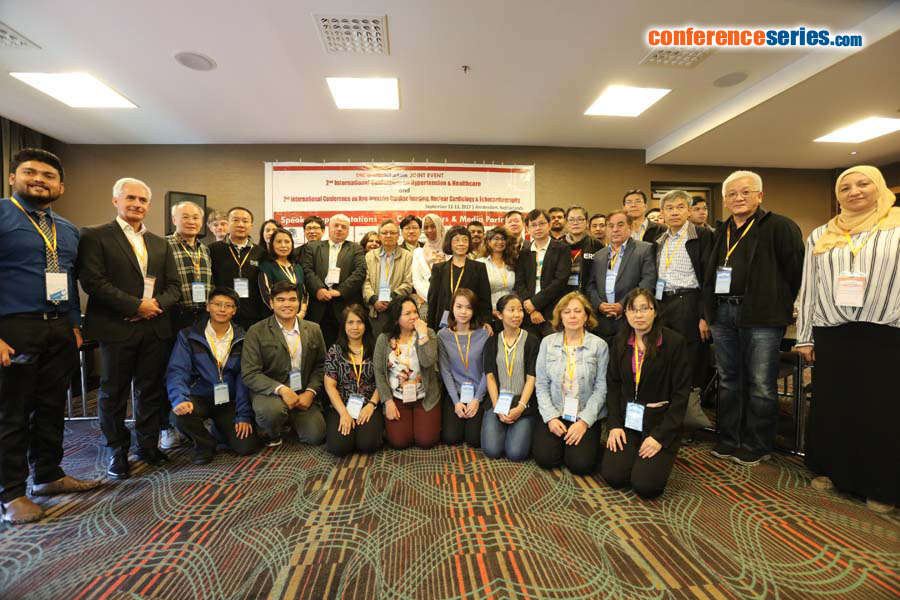2nd International Conference on Non-invasive Cardiac Imaging, Nuclear Cardiology & Echocardiography
Amsterdam, Netherlands
Faezeh Sahbaeiroy
Iran
Title: Differences between current clinical and American Heart Association blood pressure measurement techniques
Biography
Biography: Faezeh Sahbaeiroy
Abstract
Statement of the Problem: The guidelines recommended by American Heart Association for blood pressure measurement are commonly by health workers who take blood pressure .For taking blood pressure ,it is important to apply standard methods. If we do it with a few mistakes the result may be effect in patient's medication.
The purpose of this study: Is to compare the rate and accuracy of measuring blood pressure by Health Workers methods and American Heart Association Technique.
Methodology: For validation of this observation we designed a descriptive and observational study to be carried out in seven hospitals. Four hundred health workers divided into four groups (125 nurses 100 nursing students 100 medical students 75 physicians) were evaluated in a two part test. In first part (practical) the examinee had to follow all steps recommended by American Heart Association to get a passing score. In the second part (theoretical which came second to avoid influencing the practical) the examinee had to answer correctly 8 questions based on American Heart Association's guidelines to obtain a passing score.
Findings: 52.5 % of systolic and 49.3% of diastolic readings was out of range. Nursing students obtained the best practical results (52% systolic and 39% diastolic within range) and physicians obtained the lowest values (18.5% and 31.4%). These two groups showed deficiencies in the theoretical test (physicians 7.6% correct answers and Nursing students 19.5%). Medical students obtained the best results on the theoretical test (73% correct P<0.001 versus the other groups) but were deficient in the practical test (28% systolic and 42% diastolic within range).
Conclusion: In conclusion health workers used various techniques for measurement and no completely followed the standard. Such measurements may affect diagnosis and treatment of hypertension but measuring all BPs solely by the standard is not practical. We need to have a practical and efficient method for measuring BP.
References:
- Burgess SE, MacLaughlin EJ, Smith PA, Salcido A, Benton TJ.(2011) Blood pressure rising: differences between current clinical and recommended measurement techniques. J Am Soc Hypertens., 5:484–488.
- Piper MA, Evans CV, Burda BU, et al., (2015) Diagnostic and predictive accuracy of blood pressure screening methods with consideration of rescreening intervals: a systematic review for the U.S. Preventive Services Task Force. Ann Intern Med; 162:192.
- Bakris GL. (2016) The Implications of Blood Pressure Measurement Methods on Treatment Targets for Blood Pressure. Circulation; 134:904.
- Powers BJ, Olsen MK, Smith VA, et al., (2011) Measuring blood pressure for decision making and quality reporting: where and how many measures? Ann Intern Med; 154:781
- Lamarre-Cliché M, Cheong NN, Larochelle P. (2011) Comparative assessment of four blood pressure measurement methods in hypertensives. Can J Cardiol: 27: 455.



